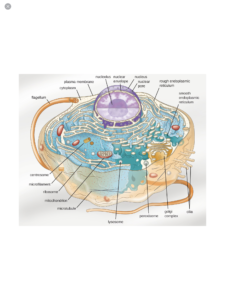
Most citations used are taken from the NLM database and are in the public domain.
WHATS IN A CELL? Mitochondria and Down Syndrome
There are 37.2 billion cells in the human body. Your body doesn’t actually ‘contain’ these cells, it ‘is’ these cells. When you see us discussing pathways and processes, nutrients, DNA, gene mutation or regulation we are discussing process occurring in every single cell in your body containing a nucleus. Think about that. Your cells aren’t just there, movement and activity is taking place within them twenty four hours a day. How amazing is that?
Not all human or mammalian cells contain a nucleus. Red blood cells and codified skin, nail and hair cells do not contain a nucleus. Thus the activity we discuss, because it will center on DNA variations in the DS nucleus, will be restricted to cells that do contain a defined nucleus.
So, what’s a nucleus? The word is actually plural but rarely will we talk about it singularly. Nucleus comes from the Latin ‘nuculeus’ meaning kernel. It is a membrane enclosed (or covered) organelle (a little sort of factory) found in Eukaryotic cells. The nucleus contains most of the cell’s genetic material. This is highly organized and compact. There are very long linear DNA molecules twisted into the double helix form so that they can be packed into the nucleus together with a large variety of proteins such as histone, to form chromosomes. These genes within the chromosomes are the cells nuclear genome – like computer code – providing the instructions that govern and control how cells function, what a cell will become and how the activities within each cell should take place.
Every bit of DNA is contained in every cell with a nucleus yet there are many types of cells. How does a cell know that it should be a heart cell or any of the various organs and parts that make up the human body if each cell contains the same instructions? The answer is relatively simple. Each cell contains all of the DNA instructions for the entire human body but some of the instructions are turned off or on allowing the cell to become what it is designed to be.
And how in the world can that happen if the instructions are packed inside a membrane that they cannot escape? Personally, I see the hand of the Creator in human cells. In my opinion, the design is far too perfect, complex and beautiful to have simply happened. If you tossed all the parts of a car in your driveway, how many millions of years would it take to make themselves into a functioning automobile? Or even one that doesn’t function at all? There is no answer because it will never happen and a single human cell is a billion times more complex than a car.
In order to ‘escape’ confinement within a membrane, a gene undergoes transcription to produce corresponding mRNA (a messenger) intermediate which, like a foreign language or computer code can then be translated into a specific protein or molecule, the product for which the gene is encoded. It is these proteins that determine how the cell functions. Protein regulation is then fundamentally important. While we will talk about the several forms of protein regulation, in treating DS, we are focused on post transcriptional. post translational and epigenic regulation. Because it is possible to inhibit genes or block proteins we can indeed address the extra proteins created by the additional genes in Down Syndrome.
STOP HERE AND WATCH CELL STRUCTURE
https://m.youtube.com/watch?v=URUJD5NEXC8
So how is the cell “different” in Down syndrome? The answer is that technically, the cells within the body of a human being with DS are not necessarily “structurally” different. The mitochondria are smaller, fewer and have less inner surface upon which to produce ATP. But research indicates that this variation in structure is actually produced by oxidative stress.
READ THE FOLLOWING ARTICLE
Although the excellent study above focuses on aging, mitochondria dysfunction has been identified in fetuses with DS. Oxidation is greatly increased when a baby begins to breathe on his or her own, however, oxidative stress does occur in the womb. Does it have to? No, it does not. By the use of a TNI prenatal, babies with DS are being born every day with normal or better mitochondria function.
Let’s take a look at the mitochondria. Why is normal mitochondria function so important and how can we address it?
STOP HERE Read the following and watch the video.
http://www.mrc-mbu.cam.ac.uk/what-are-mitochondria
How do foods benefit mitochondria dysfunction? Rosa Anna Vacca, PhD, studied two of the major ingredients, EGCG and Resveratrol to determine their effect on the mitochondria in DS. The study proved that mitochondria dysfunction can be partially corrected by polyphenols, EGCG and Resveratrol, both found in foods.
READ THE FOLLOWING SUPPORTIVE STUDIES
https://www.clinicalnutritionjournal.com/article/S0261-5614(15)00122-3/abstract
https://www.sciencedirect.com/science/article/pii/S0925443916300497
To completely correct mitochondria dysfunction, we take it two steps further by supplementing PQQ and COQ10.
READ THE FOLLOWING SUPPORTIVE STUDIES
https://www.ncbi.nlm.nih.gov/pmc/articles/PMC2804159/
https://www.ncbi.nlm.nih.gov/pmc/articles/PMC3267988/
https://www.ncbi.nlm.nih.gov/pubmed/11282042
https://m.youtube.com/watch?v=gG7uCskUOrA
THE FDA PROHIBITS EVEN INDIVIDUALS FROM MAKING MEDICAL CLAIMS FOR NUTRITIONAL SUPPLEMENTS. MENTION OF NUTRIONAL SUPPLEMENTS IS PROVIDED BASED ONLY ON THE ATTACHED RESEARCH TO EXPLAIN HOW THE HUMAN GENOME RESPONDS TO FOOD SUBSTANCES AND IS NOT INTENDED AS MEDICAL OR CURATIVE ADVICE.
 English
English Español de México
Español de México Português
Português Français
Français
Read and watched
Read
Read and watched thank you
read and watched
Read.
Read and watched